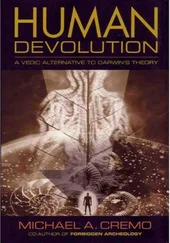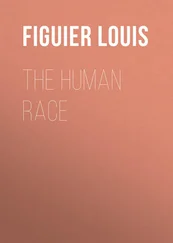Michael Cremo - Forbidden Archeology - The Hidden History of the Human Race
Здесь есть возможность читать онлайн «Michael Cremo - Forbidden Archeology - The Hidden History of the Human Race» весь текст электронной книги совершенно бесплатно (целиком полную версию без сокращений). В некоторых случаях можно слушать аудио, скачать через торрент в формате fb2 и присутствует краткое содержание. Год выпуска: 1992, ISBN: 1992, Издательство: Torchlight Publishing, Жанр: Старинная литература, на английском языке. Описание произведения, (предисловие) а так же отзывы посетителей доступны на портале библиотеки ЛибКат.
- Название:Forbidden Archeology: The Hidden History of the Human Race
- Автор:
- Издательство:Torchlight Publishing
- Жанр:
- Год:1992
- ISBN:9780892132942
- Рейтинг книги:4 / 5. Голосов: 1
-
Избранное:Добавить в избранное
- Отзывы:
-
Ваша оценка:
- 80
- 1
- 2
- 3
- 4
- 5
Forbidden Archeology: The Hidden History of the Human Race: краткое содержание, описание и аннотация
Предлагаем к чтению аннотацию, описание, краткое содержание или предисловие (зависит от того, что написал сам автор книги «Forbidden Archeology: The Hidden History of the Human Race»). Если вы не нашли необходимую информацию о книге — напишите в комментариях, мы постараемся отыскать её.
Forbidden Archeology: The Hidden History of the Human Race — читать онлайн бесплатно полную книгу (весь текст) целиком
Ниже представлен текст книги, разбитый по страницам. Система сохранения места последней прочитанной страницы, позволяет с удобством читать онлайн бесплатно книгу «Forbidden Archeology: The Hidden History of the Human Race», без необходимости каждый раз заново искать на чём Вы остановились. Поставьте закладку, и сможете в любой момент перейти на страницу, на которой закончили чтение.
Интервал:
Закладка:
An Ape with a pliable thumb and big brain,
When the gift of gab he had managed to gain,
As Lord of Creation established his reign
Which Nobody can Deny!
His listeners responded, as customary among the Red lions, by gently roaring and wagging their coattails (Wallace 1905, p. 48).
1.1 Darwin Hesitates
Just a dozen years after Charles Darwin published The Origin of Species in 1859, growing numbers of scientists and other educated persons considered it impossible, indeed laughable, to suppose that humans were anything other than the modified descendants of an ancestral line of apelike creatures. In The Origin of Species itself, Darwin touched but briefly on the question of human beginnings, noting in the final pages only that “Light will be thrown on the origin of man and his history.” Yet despite Darwin’s caution, it was clear that he did not see humanity as an exception to his theory that one species evolves from another.
Other scientists were not as hesitant as Darwin to directly apply evolutionary theory to the origin of the human species. For these scientists, Darwinism helped explain the remarkable similarity between humans and apes. Even before Darwin published The Origin of Species , Thomas Huxley had been investigating anatomical similarities between apes and humans. Huxley clashed with Richard Owen, who insisted that human brains had a unique feature—the hippocampus major. At a meeting of the British Association for the Advancement of science in 1860, Huxley presented evidence showing that brains of apes also had the hippocampus major, thus nullifying a potential objection to the idea that humans had evolved from apelike ancestors. Exuding his usual self-confidence, Huxley (Wendt 1972, p. 71) had written his wife before the British Association meeting: “By next Friday evening they will all be convinced that they are monkeys!”
Huxley did not limit himself to convincing scientists of this proposition. He delivered to working men a series of lectures on the evolutionary connection between humans and lower animals, and in 1863 he published Man’s Place in Nature, in which he summarized in popular form his arguments for human descent from an apelike creature by the mechanism of Darwinian evolution. In his book, Huxley presented detailed evidence showing the similarity of the human anatomy to that of the chimpanzees and gorillas. The book, intended for general readership, inspired violent criticism but sold well. Scientists continue to use the similarity between humans and apes as an argument in favor of the evolution of humans from apelike ancestors.
Scientists have extended the argument to the molecular level, and have presented evidence showing that there is 99 percent agreement between the DNA sequences of human genes and the corresponding genes of chimpanzees. This certainly suggests a close relationship between humans and chimpanzees, and on a broader scale the shared biochemical mechanisms of living cells indicate a relationship between all living organisms. However, the mere existence of patterns of similarity does not tell us what this relationship is. From an a priori standpoint, it could be a relationship of descent by Darwinian evolution, or it could be something quite different. To actually show evolutionary descent, it is necessary to find physical evidence of transforming sequences of ancestors.
In a companion volume to this book, we will fully discuss the argument that the genealogical tree of human descent can be traced out using biomolecular studies involving mitochondrial DNA and other genetic material. For now, we shall simply point out that interpretation of patterns of molecular similarity in terms of genealogical trees presupposes (rather than proves) that the patterns came about by evolutionary processes. In addition, the assignment of ages to such patterns of relationships depends on archeological and paleoanthropological studies of ancient human or near human populations. Thus, in the end, all attempts to show the evolution of species (the human species in particular) must rely on the interpretation of fossils and other remains found in the earth’s strata.
By the time Darwin published The Origin of Species in 1859, some key finds relevant to human origins had already been made. About 15 years previously, Edouard Lartet had found in Miocene strata at Sansan in southern France the first fossils of Pliopithecus, an extinct primate thought to be ancestral to the modern gibbons. About this discovery Lartet wrote in 1845: “This corner of ground once supported a population of mammals of much higher degree than those here today. . . . Here are represented various degrees in the scale of animal life, up to and including the Ape. A higher type, that of the human kind, has not been found here; but we must not hastily conclude from its absence from these ancient formations that it did not exist” (Boule and Vallois 1957, pp. 17–18). Lartet was hinting that human beings might have existed in Miocene times, over 5 million years ago, an idea that would not win any support from today’s scientists.
In 1856, Lartet reported on Dryopithecus, a fossil ape discovered by Alfred Fontan near Sansan. This Miocene ape is thought to be anatomically related to the modern chimpanzees and gorillas. Although Pliopithecus and Dryopithecus provided Darwinists with possible distant ancestors for humans and modern apes, there were no fossils of intermediate beings connecting humans with these Miocene primates. However, in the same year Lartet reported on Dryopithecus, the first evidence that intermediate prehuman forms may have existed was found in the Neander valley in Germany.
1.2 The Neanderthals
In the latter part of the seventeenth century, a minor German religious poet and composer named Joachim Neumann sometimes wandered through the Dussel River valley, in solitary communion with nature. He used the pseudonym Neander, and after his death the local people called the valley the Neanderthal. Two centuries later, others came to the pleasant little valley of the Dussel not for peace of mind but to quarry limestone for the Prussian construction industry. One day in August of 1856, while excavating the Feldhofer cave high on a steep slope of the valley, some workmen discovered human fossils and gave them to Herr Beckershoff. Beckershoff later dispatched a skullcap and some other large bones to J. Carl Fuhlrott, a local schoolteacher with a well-known interest in natural history. Recognizing the fossils as possible evidence of humanity’s great antiquity, Fuhlrott in turn gave them to Herman Schaffhausen, a professor of anatomy at the University of Bonn.
At this time, most of the scientists considering the question of human antiquity believed that Europe had once been inhabited by a roundheaded primitive race who used tools of stone and bronze. This race had later been replaced by an invading longheaded race who knew how to use iron. The two races were not, however, regarded as being linked by evolution. In 1857, Professor Schaaffhausen delivered reports to scientific gatherings in Germany, calling the newly discovered Neanderthal man a representative of a “barbarous aboriginal race,” perhaps descended from the wildmen of northwestern Europe mentioned in the works of various Roman authors such as Virgil and Ovid. Schaffhausen called special attention to the Neanderthal skull’s primitive features—its thick bone structure and its pronounced brow ridges—as evidence of its antiquity and difference from the modern racial type. Others suggested it was simply the skull of a modern man, heavily deformed by disease. And there the matter rested until 1859, when Darwin published The Origin of Species, setting off intense speculation about humanity’s possible descent from more primitive apelike creatures.
Читать дальшеИнтервал:
Закладка:
Похожие книги на «Forbidden Archeology: The Hidden History of the Human Race»
Представляем Вашему вниманию похожие книги на «Forbidden Archeology: The Hidden History of the Human Race» списком для выбора. Мы отобрали схожую по названию и смыслу литературу в надежде предоставить читателям больше вариантов отыскать новые, интересные, ещё непрочитанные произведения.
Обсуждение, отзывы о книге «Forbidden Archeology: The Hidden History of the Human Race» и просто собственные мнения читателей. Оставьте ваши комментарии, напишите, что Вы думаете о произведении, его смысле или главных героях. Укажите что конкретно понравилось, а что нет, и почему Вы так считаете.












